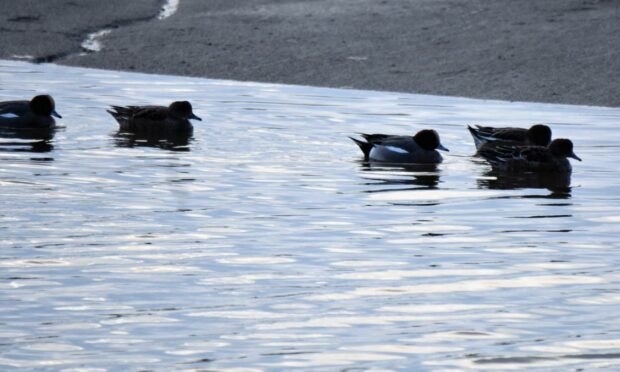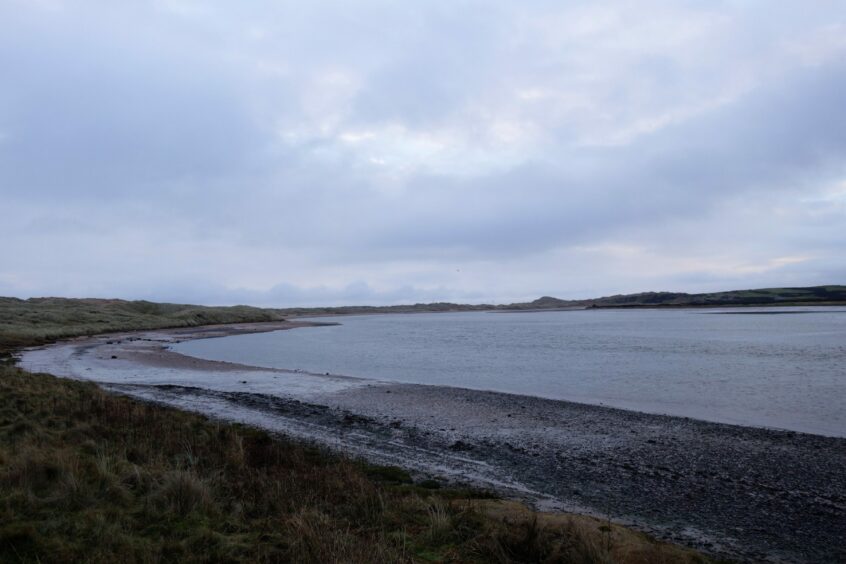There was something strangely hypnotic about watching this group of wigeon slowly cruise up the Foveran Burn by Newburgh under the soft light of a cold winter dawn.
There were about 50 of these enchanting ducks dabbling in the muddy shallows of this creek by the Ythan estuary.
For a while, they were content up-ending in the water in search of food, then, at the behest of some unknown cue, they purposefully headed upstream to explore pastures new.
I find such behaviour fascinating – had a dominant duck signalled it was time to move, or was this a collective decision made by some subtle means of subliminal communication?
Questions and answers
That’s what I like about nature, it always throws up more questions than answers.
The low winter sun hung behind the wigeon, so it was difficult to appreciate fully their colour and form, but I knew from previous encounters that they exhibit a beauty of plumage few other birds can match.
The drake is a wonderful picture of pastel softness, with his yellowish fore-parting on a burnt-sienna head, subtle lilac breast and a shimmering silvery body.
Everything about the drake wigeon is gentle and benign; this a bird that just oozes warmth.
On watching these wigeon, I found it difficult to get my head around the fact that some of these fragile looking ducks could have migrated several thousand miles to spend the winter in this little corner of Aberdeenshire.
Breeding
Small numbers of wigeon do breed in Scotland, but most of those found on our winter estuaries and lochs are visitors from Iceland, Scandinavia and Russia.
Some even hail from as far afield as central Siberia and one can only imagine the dangers faced during such a daunting migration.
Safe stopover points are crucial during these mammoth journeys, and this underlines why nature conservation really does need to be an international affair.
Many migrating wigeon spend time on the Pripyat river floodplain in southern Belarus on their way to western Europe and the protection of such areas is just as crucial as the conservation of our own wetlands if these ducks are to thrive.
On the move
I moved on from the Foveran Burn to the other side of the Ythan, and slowly headed down the well-maintained path that fringes the estuarine mud flats and channels.
Curlews and bar-tailed godwits eagerly probed the mud, and there were good numbers of redshanks about too, piping loudly whenever they took to the air.
Gorse was also in flower, although the yellow blooms were sporadic and falling well short of the full floral flourish of early summer.
There is an old country saying that goes along the lines of ‘when gorse is out of bloom, kissing is out of season’ – a reflection of the fact that at least a few of its golden flowers are likely to be in bloom no matter the time of year.
I brushed my fingertips gently across a cluster of their flowering beauty and felt invigorated by the intrinsic optimism and vibrancy they brought to the winter landscape.











